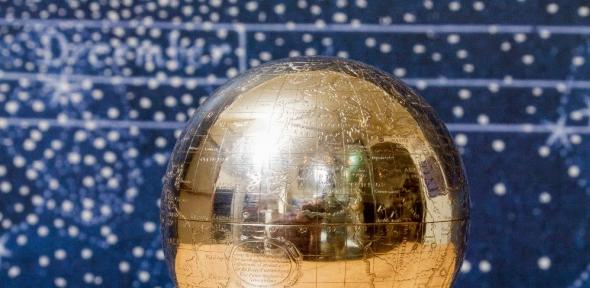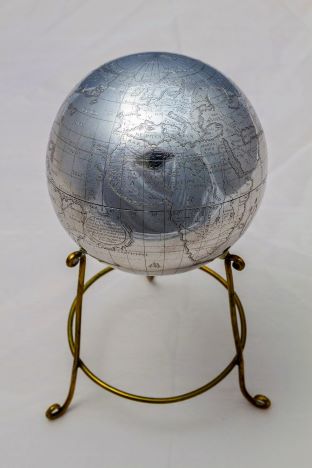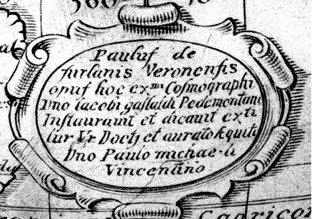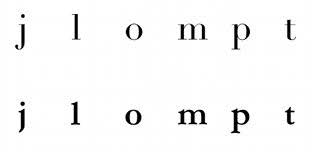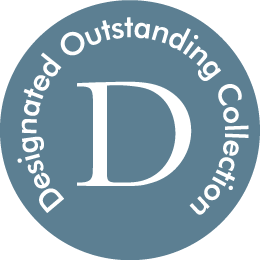Since the inscription on the globe was copied from Forlani's world map, the object must have been made after 1560. Looking at the script on the globe can tell us more. Writing styles underwent a transformation between 1660 and 1690. Characteristic scripts from before this period can be called 'old style', while more recent scripts are often described as 'modern'. Old style scripts are more angular than modern ones. For instance, the top of a letter 'p' tends to come to more of a point in the old style scripts. There is also less contrast between light and dark strokes in the old style. This is particularly noticeable in letters with pronounced curves such as 'e' and 'o'. Perhaps the easiest way to tell old style from modern script is to look at the serifs (Image 3). Old style scripts used serifs which dropped away on the diagonal, whereas modern scripts generally use horizontal and vertical serifs. The script on the globe appears to be modern, so the globe is likely to have been made after 1690.
Another piece of evidence suggests that the globe might have been made even later. The Florianus gores would have produced a globe of 258mm in diameter. However, the globe in the Whipple Museum is 100mm in diameter. Copying the gores onto a smaller sphere would have required the craftsman to make awkward adjustments to the scale, rather than reproducing the cartography point by point. However, a reproduction of the Florianus gores appeared in A. E. Nordenskiöld's widely available Facsimile Atlas (1889). These gores gave a globe of 100mm in diameter - exactly the same size as the one in the Whipple Museum. We cannot say for sure whether the maker was working from the 1889 version of the gores, but it would certainly have been a lot easier for him to do so than to work from the earlier version. On this basis we might expect the globe to have been made after 1889. The mismatch of cartography and inscription also seems more likely if the maker lived long after the original sources were produced.
Authenticity and Expectation
Robert Whipple spent a good deal of money on the globe, and described it in his accession record as "Silver globe, Italian 95mm diam in case by Furlani", apparently thinking the object authentic. It is likely that Whipple's judgement was based in part on his high opinion of the dealers who supplied the globe - he had bought many authentic instruments from them over a period of some years, and so reasonably expected that the globe would be genuine too. However, a closer look has shown that the globe's authenticity is open to question. Imagine that you had seen the globe on its own - would you have thought it a fake?
This article is based on the work of Rob Jenks, 'An Early Italian Globe? A critical study of a terrestrial globe in the Whipple Museum', in Taub, L. & Willmoth, F. The Whipple Museum of the History of Science - instruments and interpretations to celebrate the 60th anniversary of R. S. Whipple's gift to the University of Cambridge (Cambridge University Press: Cambridge, 2006).
Inscription translation by Nick Jardine in: Olivia Brown, Catalogue 4: Spheres, Globes and Orreries (Cambridge, 1983), cat. no. 7.
Katie Taylor
Katie Taylor, 'An early Italian globe?', Explore Whipple Collections, Whipple Museum of the History of Science, University of Cambridge, 2009.

